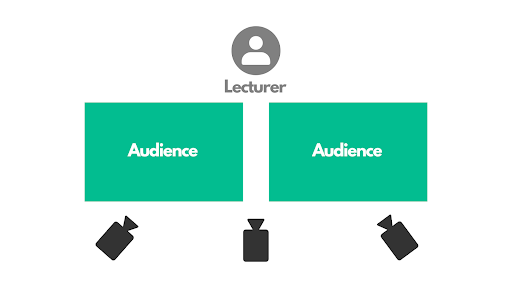As lectures are increasingly livestreamed or recorded for internet and broadcast uses, we have developed some basic guidelines for these hybrid lectures. Please let us know if you have questions at lecture@christianscience.com.
The Christian Science Board of Directors owns copyright to all Christian Science lectures, including derivative versions recorded by hosting branches. See "Copyright information for all lectures" on Host a Christian Science Lecture.
Branches should discuss the idea of a hybrid lecture with the lecturer before proceeding with arrangements. There are specific forms to sign to confirm copyright ownership and appropriate use of the recording.
Use of lecture recordings will be managed by the lecturer. Lecturers will give branches links to the recordings for embedding on the branches’ websites. The lecturer should review the entire video and make appropriate edits within a reasonable time after the lecture event.
The branch and lecturer should discuss how the branch would like to use the recording (internet embedding on the branch website, radio or limited cable TV broadcast, etc.) and for how long. To avoid misunderstanding, we recommend that these communications be in writing (including or via email).
We recommend making a lecture recording available online for up to three months, though a lecturer may allow a different time period (up to 12 months) in certain circumstances. The Board of Lectureship sometimes posts lectures for longer periods on its own internet channels.
At the beginning of the lecture, please announce to the audience that the lecture is being livestreamed and/or recorded for posting on the internet, embedding on your website, and possibly other broadcast uses. Offer an off-camera area for individuals who do not wish to be recorded.
The best practice is to have the camera focus on the lecturer and to limit the number of recognizable audience members.
During the lecture, you will be responsible for identifying with the videographer(s) any audience members whose faces or voices may have been recorded, and for having those audience members sign an Audience Consent, Release, and Copyright Agreement. For example, this could include an introducer; those recorded individually asking a question (though it's best if the lecturer repeats the question and not to record the questioner); those who might have inadvertently turned or walked towards the camera; etc.
In general, the following points describe good practices for achieving a video of acceptable quality. If you are interested in sharing your video lecture with the Board of Lectureship, we will consider posting it or a version of it on christianscience.com or on the Board of Lectureship’s YouTube channel if these points have been fulfilled. Please follow these tips and see the graphics below to aid the process and help to ensure a high quality recording for future viewers:
Have all videographers and all other parties who contributed to the creation of the recording sign a Contributor Copyright Agreement. See "Copyright information for all lectures" on Host a Christian Science Lecture.
The video must be in High Definition.
The audio must be recorded from an external microphone which is fed directly into the camera.
Please, no shots of the audience, except a wide crowd shot from behind.
It would be best to have more than one camera for the shoot, however, it is not required. Make sure there are no breaks or gaps in the filming.
Make sure to keep the lecturer in the shot. Be careful not to have the lecturer too far to one side, too high or too low as they might be cut off.
Ex. 1 below shows different ways to frame the speaker in the camera’s viewfinder. If using two cameras, we recommend having one frame be a full-body shot, while the other frames more of a close-up.
Ex. 2 shows preferred locations for setting up the cameras. It’s recommended that cameras be at the back of the audience rather than in front, so that the video viewers have a better visual reference of the event.


